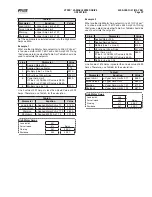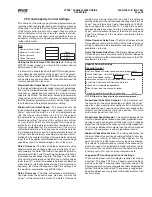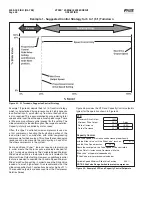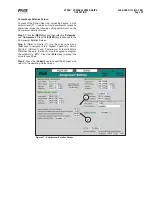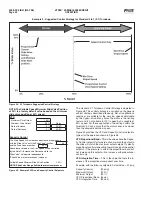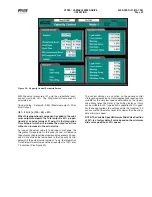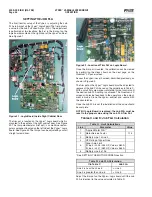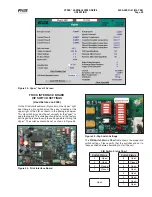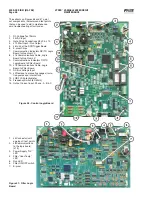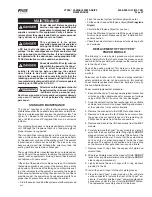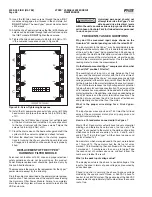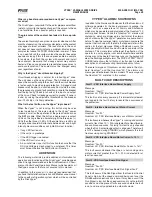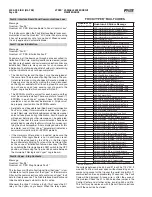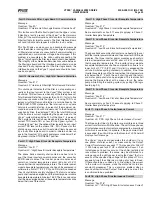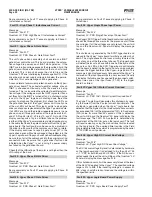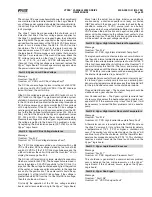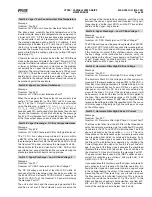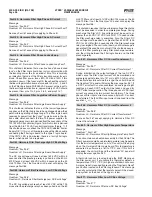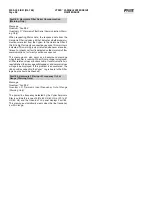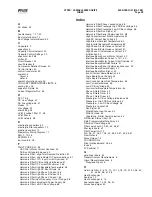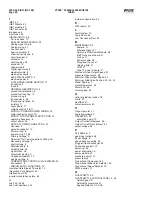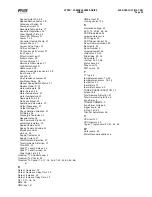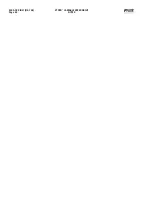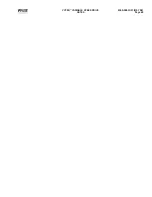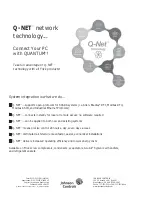
VYPER
™
VARIABLE SPEED DRIVE
MAINTENANCE
S100-200 IOM (MAY 08)
Page 51
Fault 9: Harmonic Filter - Logic Board Or Communications
Message
Quantum: “Fault 9 “
Quantum LX: “ Harmonic Filter Logic Board or Comms Fault “
This fault occurs if the No Fault signal from the Vyper
™
is low,
indicating a fault is present at the Vyper
™
or the Harmonic
Filter, but the communications data contains no Harmonic
Filter fault data for twenty seconds. The Frick Interface Board
will send Initialize data requests while this fault is active.
This Fault Code can also occur as a background message
when the chiller is running. When this message is displayed,
all fi lter related values are unavailable. If communications is
reestablished, normal values will again be displayed. If this
problem is encountered, the ribbon cable connecting the
Vyper
™
logic board to the fi lter logic board should be checked.
The integrity of the shielded communications cable between
the fi lter logic board and the Interface board should also be
checked. Finally, replacement of the fi lter logic board, the
Interface board and the Vyper
™
logic board should be tried,
one board per try.
Fault 10: Harmonic Filter - High Total Demand Distortion
Message
Quantum: “Fault 10”
Quantum LX: “ Harmonic Filter High Total Demand Distortion’’
This shutdown indicates that the fi lter is not operating cor-
rectly or the input current to the Vyper
™
/fi lter system is not
sinusoidal. This fault occurs when any of the three phases of
Total Demand Distortion is greater than 25.0 %, for forty-fi ve
continuous seconds while the Vyper
™
is running. TDD is an
acronym for Total Demand Distortion, a term defi ned by the
IEEE Std 519-1992 standard as “the total root - sum - square
harmonic current distortion, in percent of the maximum de-
mand load current (15 or 30 min demand)”. In the fi lter option
supplied by Frick, the displayed TDD is the total RMS value
of the harmonic current supplied by the power mains to the
Vyper
™
system divided by the FLA of the Vyper
™
, in percent.
The harmonic fi lter option was designed to provide an input
current TDD level of 8% or less for the Vyper
™
system. A
standard Vyper
™
less the optional fi lter typically has an input
current TDD level on the order of 28 - 30%. Causes for this
shutdown are numerous but it would most likely be caused
by a faulty fi lter logic board. In order to initiate a chiller run
again, the Quantum
™
LX panel’s compressor switch must fi rst
be placed into the STOP/RESET position.
Fault 11: High Phase B Inverter Baseplate Temperature
Message
Quantum: “Fault 17”
Quantum LX: “High Phase B Inverter Baseplate Temperature”
The phase bank assembly shall contain one heat sink to
cool the three inverter power modules and the converter
SCR/Diode modules. The inverter power modules each
contain an internal temperature sensor (5K ohm at 25°C)
to monitor their baseplate temperatures. The inverter power
module baseplate temperatures shall each be compared in
software to a limit of 175°F (79°C) and if this limit is exceeded
the unit shall initiate a safety shutdown. The fan(s) and water
pump shall remain energized until the inverter power module
baseplate temperature falls below 165°F. The fans and pumps
shall be de-energized when all baseplate temperatures drop
below their reset thresholds.
Fault 12: High Phase C Inverter Baseplate Temperature
Message
Quantum: “Fault 12”
Quantum LX: “High Phase C Inverter Baseplate Temperature”
Same comments as Fault 11 except applying to Phase C
Inverter Baseplate Temperature
Fault 13: Low Phase B Inverter Baseplate Temperature
Message
Quantum: “Fault 13”
Quantum LX: “Low Phase B Inverter Baseplate Temperature”
The phase bank assembly shall contain one heat sink to cool
both the inverter power module and the converter SCR/Diode
modules. The three inverter power modules each contain
internal temperature sensors (5K ohm at 25°C) to monitor
their baseplate temperature. The inverter power module
baseplate temperatures shall be compared in software to a
lower limit of 37°F (2.8°C) and if this limit is exceeded the
unit shall initiate a cycling shutdown. In addition, if the three
Inverter baseplates and the Converter heat sink temperature
falls below the 37°F limit, the unit shall trip and the fan(s)
and water pump shall also be energized. This feature shall
provide the Service Dept. with a means to run the water
pump while fi lling the cooling system (by pulling VSD logic
board plug P2).
Fault 14: Low Phase C Inverter Baseplate Temperature
Message
Quantum: “Fault 14”
Quantum LX: “Low Phase C Inverter Base plate Temperature”
Same comments as Fault 13 except applying to Phase C
Inverter Base plate Temperature
Fault 17: High Phase A Instantaneous Current
Message
Quantum: “Fault 17”
Quantum LX: “VSD High Phase A Instantaneous Current”
The three output lines to the motor are monitored via three
current transformers within the drive. The unit’s three phases
of instantaneous output current are compared to a prescribed
limit which is contained in hardware. If the peak current limit
is exceeded, the unit will trip and the Quantum
™
LX Panel will
display a fault message.
The Vyper
™
Logic board generates this shutdown. If any
one phase of motor current, as measured by the Output
Current Transformers, exceeds 771 Amps peak for 305 HP
/ 1200 Amps peak for 437 HP, a shutdown will occur. If an
Instantaneous Current occurs, but the chiller restarts and
runs without a problem, the cause may be attributed to a
voltage sag on the utility power feeding the Vyper
™
that is in
excess of the specifi ed dip voltage for this product. This is
especially true if the chiller was running at or near full load.
If there should be a sudden dip in line voltage, the current
to the motor will increase, since the motor wants to draw
constant horsepower. This is a common problem when a
second chiller is started. Contact Frick factory service if this
is confi rmed to be a problem.
Fault 18: High Phase B Instantaneous Current
Message
Quantum: “Fault 18”
Quantum LX: “: “VSD High Phase B Instantaneous Current”

